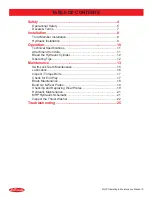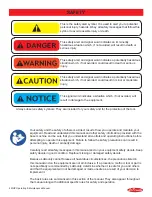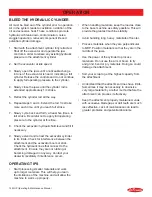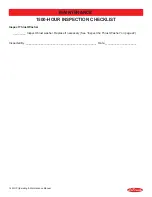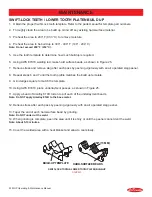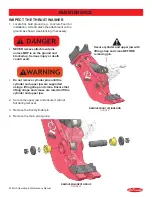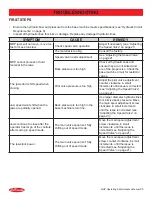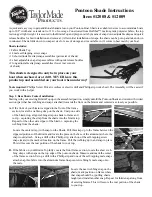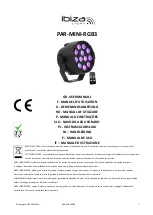
10 MHP Operating & Maintenance Manual
OPERATION
BEFORE YOU START
Know Your Safety Program
• Read and understand this manual and the base
machine manual.
• Know the employer’s safety rules. Consult your
foreman for instructions and safety equipment.
•
Learn the traffic rules at the work site. Know
the hand signals used on the job and who is
responsible for signaling. Take signals from only
ONE
person.
• Wear personal protection equipment. This
includes eye protection, hard hat, steel toe shoes,
gloves, hearing protection and respirator.
Know Your Equipment
• Learn and test the function of all controls. If
malfunctions are found, shut the machine down
and report the malfunction for repair.
• Be familiar with safety devices, indicators, warning
devices and caution instructions. They will alert
you to conditions that are hazardous.
•
Know the clearances in the work area.
Daily Safety Checks
• Ensure all decals are installed and legible.
Contact LaBounty for replacements as required.
• Have a
DAILY
safety dialog with all workers.
Inform them of any abnormal work that is planned.
Remind them of the safe working distance.
• Clear the area.
ALWAYS
look out for others.
In any work area, people constitute a serious
safety hazard. Before operating, walk around the
machine to ensure no workers are next to, under
or on it. Warn nearby workers that you are starting
up.
DO NOT
start up until they are out of danger.
•
Check the location of cables, gas lines and water
mains before operation. Ensure work site footing
has sufficient strength to support the machine.
When working close to an excavation, position
machine with the propel motors at the rear.
• Keep bystanders clear, especially before moving
the boom, swinging the upper structure, or
traveling.
ALWAYS
be alert for bystanders in or
near the operating area.
Safety Devices
• Seat belts
• Canopies
• Safety decals
• Shields and guards
•
Flags and flares
• Barricades
• Signs and other
markings
• Warning lights
• Falling Objects
Protective Structures
(FOPS)
• Visual or audible
warning devices
General Rules For Safe Operation
• KNOW
the capacity of the excavator and it’s
attachments.
DO NOT
overload or serious injury
could result. The attachment may have altered
the machine’s lift capabilities.
• MHP is for processing materials.
DO NOT
use for
unapproved purposes or warranty may be voided.
•
If MHP stalls during processing, scale back the
amount of material being processed at one time.
Overloading can cause overheating and has
adverse effects on the hydraulic system.
• Cycle the MHP cylinder completely when
processing. Fully cycling MHP will allow hydraulic
fluid to circulate and prevents overheating.
• Maintain a safe distance.
• NEVER
leave MHP suspended or pass it over
people, occupied vehicles or buildings.
•
When working in confined spaces, keep watch on
exposed parts, such as cylinder rods and hoses,
to avoid damage.
• Maintain at least 15 feet (5 meters) between MHP
and any nearby power lines.
• ALWAYS
lower MHP to the ground and turn the
base machine off when leaving the machine
unattended.
• DO NOT
close the jaws on a structure and
reverse the excavator in an attempt to pull down
material. This is dangerous and will damage the
excavator and the MHP attachment.
• DO NOT
alter factory preset hydraulics. This may
void the warranty.
• DO NOT
shear high tensile steel, such as railroad
rail, spring steel, axles and some types of wire.
Jaw damage will result. This type of material
breaks when processed and can become a
projectile which could cause injury or death.



